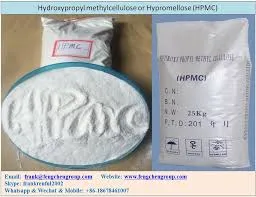
ພ.ຈ. . 21, 2024 10:07 Back to list
hpmc for gypsum plaster
Understanding HPMC for Gypsum Plaster A Comprehensive Overview
Hydroxypropyl Methylcellulose (HPMC) is an essential ingredient in various construction materials, especially gypsum plaster. As the demand for high-quality construction materials continues to rise, understanding the role of HPMC in gypsum plaster formulations becomes increasingly significant.
What is HPMC?
HPMC is a versatile, non-ionic cellulose ether derived from natural cellulose. It is extensively used in construction due to its unique properties, including water retention, workability, and improved binding characteristics. The molecular structure of HPMC allows it to create a gel-like consistency when mixed with water, leading to enhanced performance in various applications, including plastering.
The Role of HPMC in Gypsum Plaster
Gypsum plaster is favored for its quick setting time, fire resistance, and excellent coverage on walls and ceilings. However, its performance can be further enhanced with the incorporation of HPMC. Here are some key roles HPMC plays in gypsum plaster
1. Water Retention One of the primary advantages of adding HPMC to gypsum plaster is its water retention capability. It helps maintain moisture within the plaster mix, ensuring that the gypsum has sufficient time to hydrate and set properly. This is particularly crucial in environments with low humidity, where quick evaporation can compromise the quality of the plaster.
hpmc for gypsum plaster

2. Workability HPMC improves the workability of gypsum plaster. With its smooth consistency, it enables easier application and spreading on various surfaces. This attribute is essential for finishing work, ensuring a smooth and even layer that can be easily manipulated to achieve the desired texture.
3. Adhesion The use of HPMC enhances the adhesion properties of gypsum plaster. This leads to better bonding between the plaster and the substrate, reducing the likelihood of cracking or peeling over time. Enhanced adhesion is particularly important in demanding applications where durability and longevity are critical.
4. Setting Time Control HPMC can also influence the setting time of gypsum plaster. By adjusting the dosage of HPMC, manufacturers can control how quickly the plaster sets, allowing for greater flexibility in application processes. This is beneficial in large projects where timing is essential for subsequent work phases.
5. Reduced Shrinkage Another significant advantage of using HPMC in gypsum plaster is the reduction of shrinkage during the drying process. HPMC helps to mitigate the formation of cracks, improving the overall integrity and aesthetic appeal of the plastered surface.
Conclusion
In summary, HPMC serves as a value-added component in gypsum plaster formulations. Its water retention properties, enhanced workability, improved adhesion, control over setting times, and reduction of shrinkage contribute to the overall performance of gypsum plaster, making it a preferred choice for construction projects worldwide. As the construction industry evolves, the importance of high-quality materials like HPMC-modified gypsum plaster will continue to grow, ensuring that builders and architects can achieve the highest standards in their projects.
Overall, the incorporation of HPMC into gypsum plaster not only enhances technical characteristics but also addresses the needs for efficiency and durability in construction practices. Embracing such innovations will undoubtedly pave the way for better building standards and practices in the future.
-
The Widespread Application of Redispersible Powder in Construction and Building Materials
NewsMay.16,2025
-
The Widespread Application of Hpmc in the Detergent Industry
NewsMay.16,2025
-
The Main Applications of Hydroxyethyl Cellulose in Paints and Coatings
NewsMay.16,2025
-
Mortar Bonding Agent: the Key to Enhancing the Adhesion Between New and Old Mortar Layers and Between Mortar and Different Substrates
NewsMay.16,2025
-
HPMC: Application as a thickener and excipient
NewsMay.16,2025
-
Hec Cellulose Cellulose: Multi functional dispersants and high-efficiency thickeners
NewsMay.16,2025







